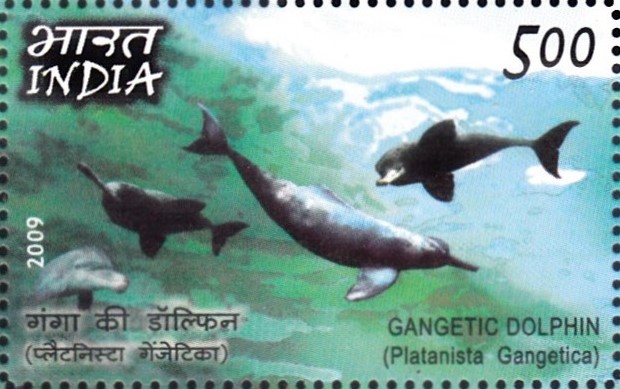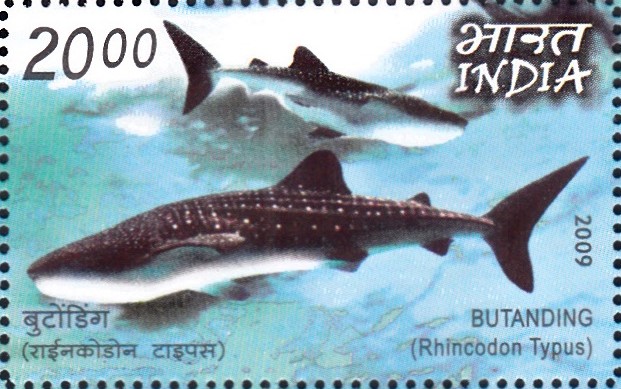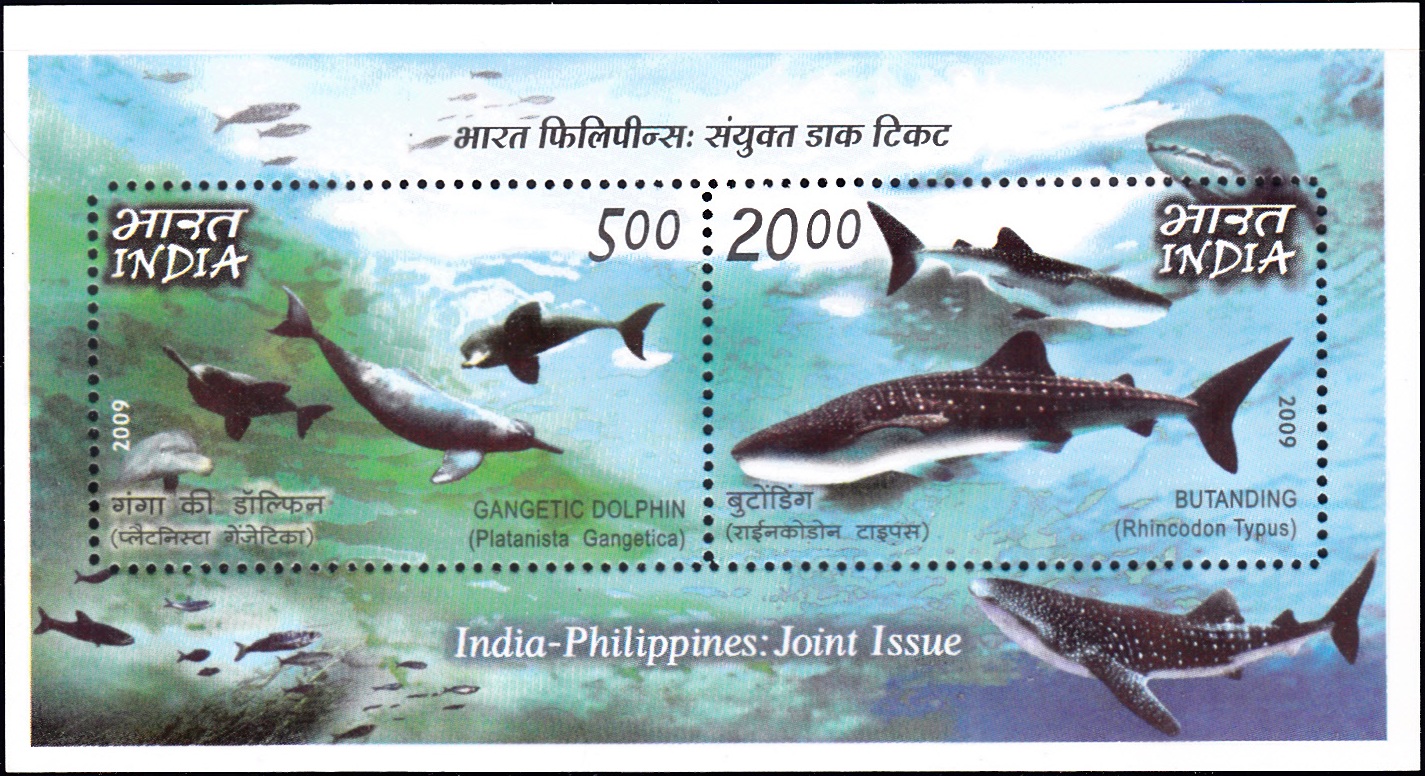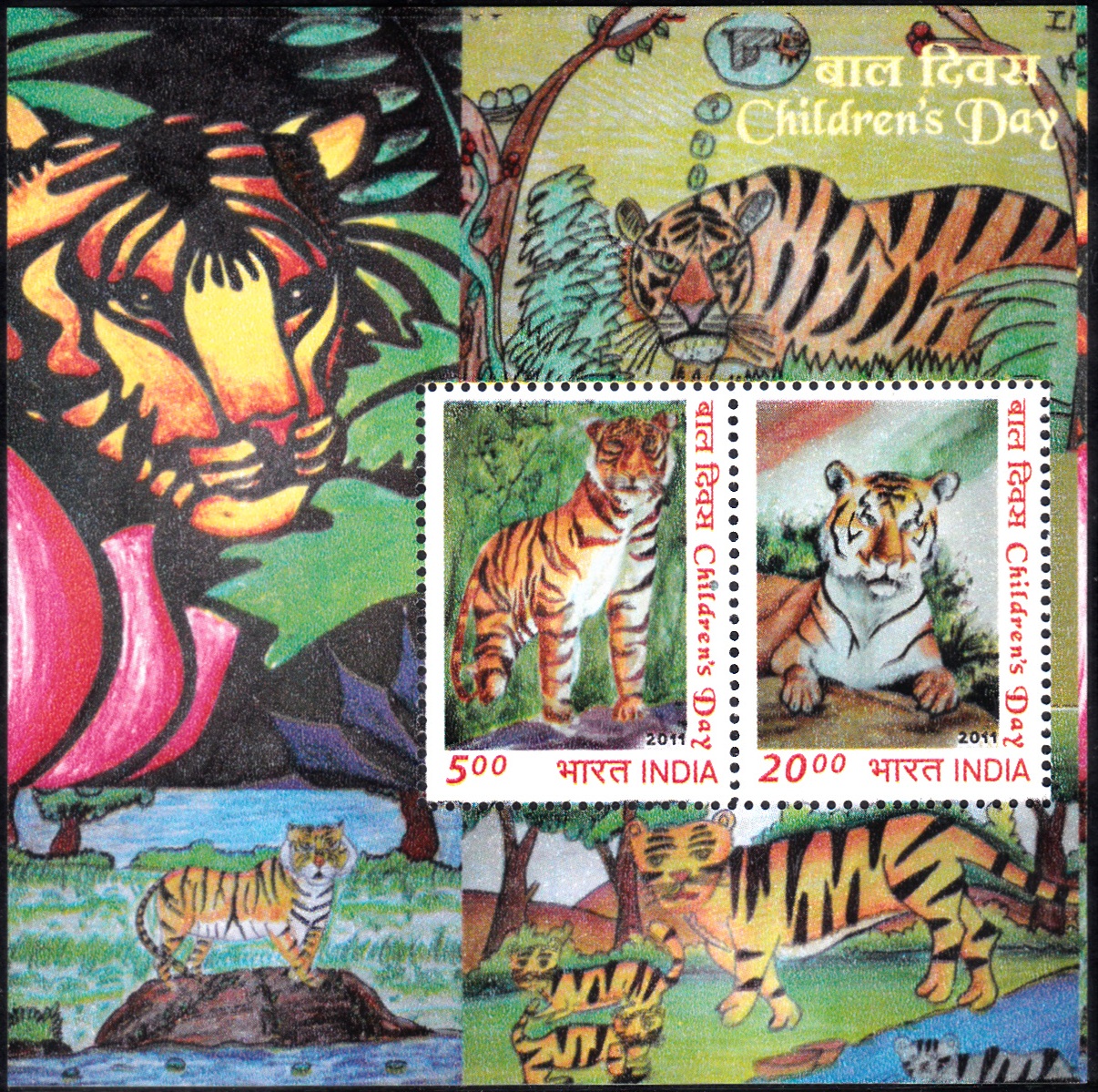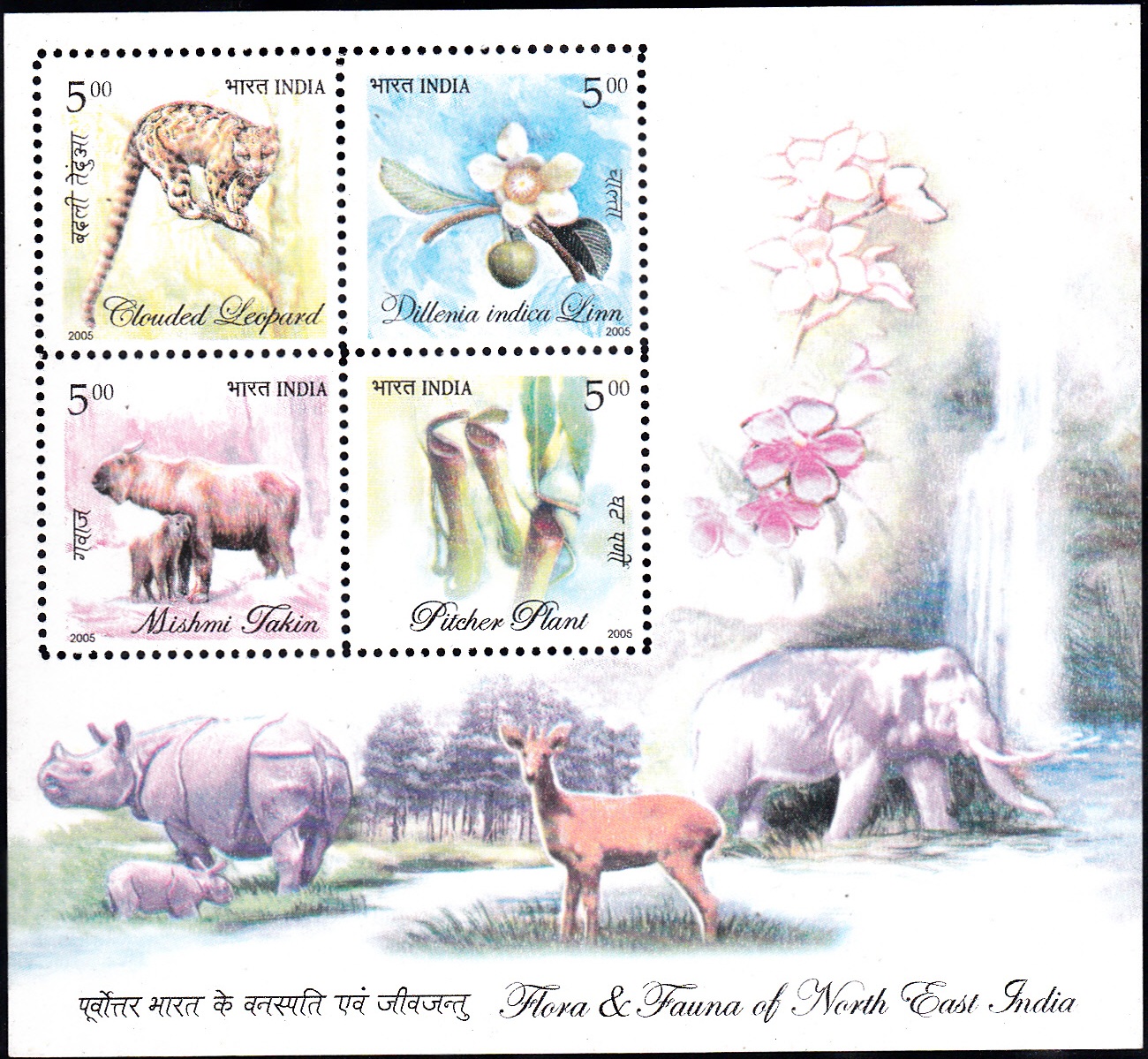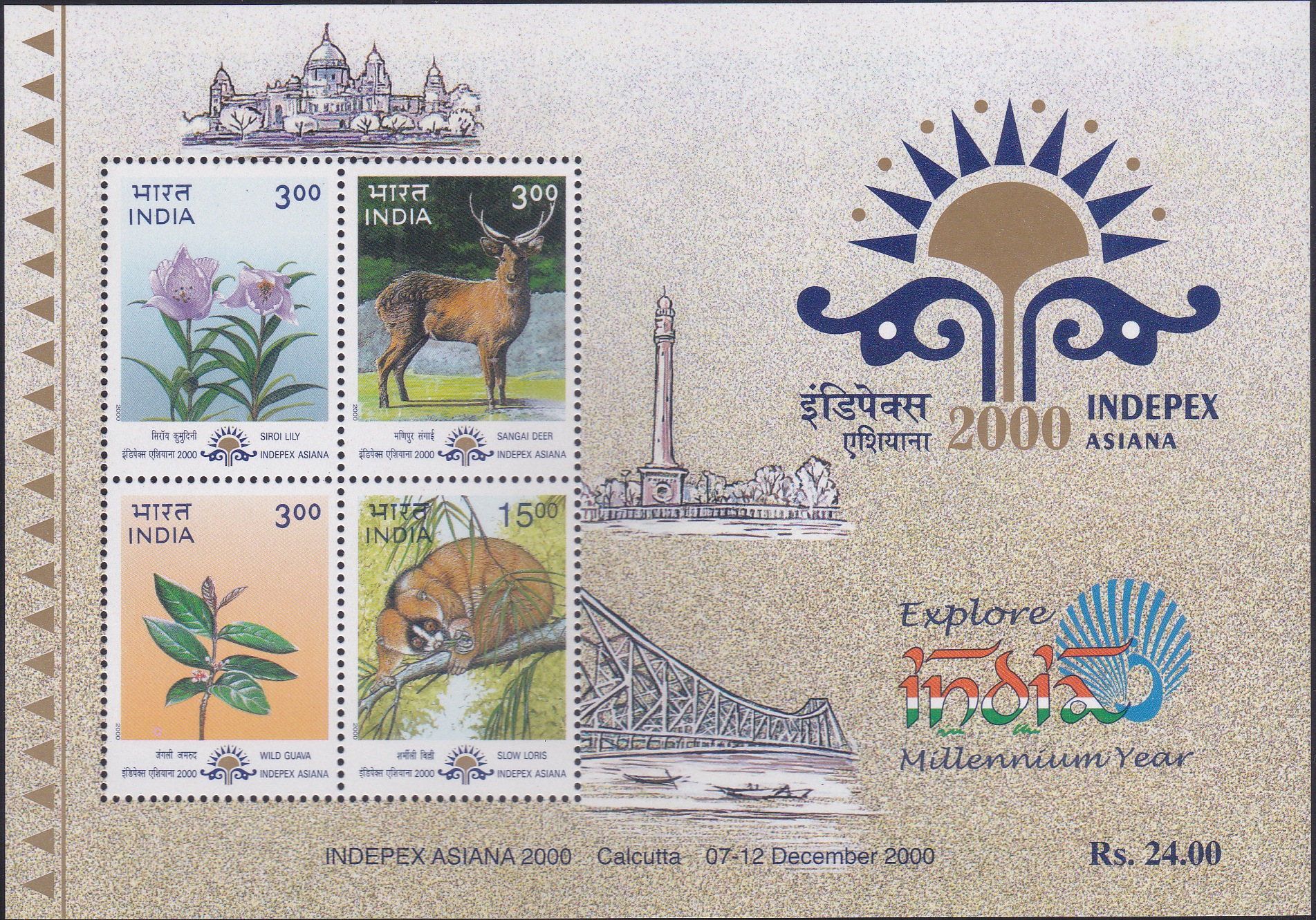
India-Philippines : Joint Issue
A Miniature Sheet consisting of 2 nos of commemorative postage stamp on the India – Philippines : Joint Issue – Butanding and Gangetic Dolphin :
Issued on Nov 16, 2009
Issued for : Life began in water, and these endangered species of the ocean and the river are ringing a vital bell which we should pay serious attention to. Through this joint issue of stamps India and Philippines not only mark 60 years of their relationship, but also turn the spotlight on one of the major global concerns of today : protecting wildlife and its habitat, and ecology.
Credits :
Stamp & FDC : Kamleshwar Singh
Cancellation : Alka Sharma
Type : Miniature Sheet, Mint Condition
Colour : Multi colour
Denomination : 500 & 2000 Paise
Stamps Printed : 1.5 Million each
Miniature Sheets : 0.4 Million
Printing Process : Wet–offset
Printer : India Security Press, Nasik
About :
- India and Philippines established formal diplomatic relations on November 16,1949 following the independence of the Philippines in 1946 and of India in 1947 and have since maintained good and cordial relations. Over the years, the two countries have signed several agreements, which provide a broad framework for bilateral ties between the two countries. As members of various multilateral fora, the two countries have coordinated their positions on several regional and international issues, strengthening bilateral relations and mutually beneficial cooperation facilitated by high level visits and various agreements. With bilateral trade, cooperation in several areas such as oil gas, non convention sources of energy, agricultural research etc., the two countries are also attuned to concerns for ecological issues.
- Marine mammals, because of their intelligence, visibility and frequent interactions with humans, hold a special place in people’s mind. The biggest threat to them is their accidental capture or entanglement in fishing gear which kills hundreds of thousands of them each year. The other major factor of their decline is due to destruction or degradation of their natural habitat.
- Butanding :
- The Philippines is the world’s second-largest archipelago. Located in Southeast Asia, its 7,107 islands straddle the Coral Triangle, making them one of the top marine biodiversity hotspots in the world.
- The whale shark (Rhincodon typus), known locally as the Butanding, is among the best loved marine animals that populate or visit Philippine waters. The Butanding is the largest variety of shark and can measure up to 20 meters in length and weigh more than 30 tons, i.e. the largest living fish species, but in spite of its size, this animal is known to be remarkably gentle. The Butanding is a slow moving, filter-feeding shark having very large mouth, fed mainly on plankton, microscopic plants, and animals.
- Donsol in Sorsogon province has been declared as a sanctuary for the whale sharks and there is now a thriving eco-tourism program in place that allows people to see and swim with these “gentle giants of the deep.” An animal festival is also held in the municipality in honour of the fascinating creatures.
- Gangetic Dolphin :
- The Gangetic river dolphin occurs only in the fresh water rivers of India and Bangladesh. It is known as the fresh water tiger. Today it is a highly threatened species. Dams and barrages had posed a major threat to this water dolphin as they isolate the dolphins preventing them from swimming freely up and down the river.
- The Ganges River dolphin weighs up to 90 kg and measures 1.5- 2.5 meters (4.9-8.2 ft) in length. It eats a variety of fish and invertebrates. The stomach contents of dolphin have included prawns, clams, catfish, freshwater shark etc. The seasonal habits and movements of the Ganges River dolphin are not well known, but there is some evidence of seasonal change in distribution, with animals travelling upstream as the water level rises, and entering smaller streams. The waters that it inhabits are extremely murky. Probably for this reason, the dolphin’s sight has degenerated. Its eye lacks a lens, and the dolphin is sometimes referred to as being blind, although its eyes do seem to function as a direction-finding device. To find food, it probably uses echolocation and also probes with its sensitive snout for fish, shrimp, and other organisms in the bottom mud. Blindness is one of the reasons why this dolphin swims on one side underwater, with one flipper trailing in the muddy riverbed. The physical touch may give the dolphin important information about its surroundings and help it to find food.
- The dolphins living a pathetic life in the Ganga are fighting a losing battle for their survival. The threat to their life is the commercial fishing and ecologically insensitive irrigation practices along the river. Polluted water flowing into the river from a number of tributaries are severely straining the habitat of these shy mammals. Adding further to its miseries, a huge quantity of water taken out of the Ganga through numerous irrigation barrages are making the river shallow day by day.
- Vikramshila Ganges River Dolphin Sanctuary in Bihar State of India has been notified under the Wild Life Protection Act 1972 for conservation of Ganges River Dolphin.
- Text : Based on material provided by the Ministry of External Affairs, Embassy of the Philippines and also through internet.


